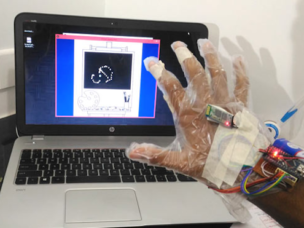
Grove - Hall Sensor
Sold outThe Hall sensor uses the Hall Effect, which is the production of a voltage difference across an electrical conductor, transverse to an electric current in the conductor and a magnetic field perpendicular to the current.
Overview
There is a continuous-time switch on this Grove module. The output from the module switches from low (turns on) when a magnetic field (south polarity) is perpendicular to the Hall sensor and when it passes the operate point threshold BOP it switches to high (turns off) when the magnetic field disappears.
The twig can for example be used to measure RPM of a wheel or a motor.
Features
- Grove Compatible Interface
- 400ns transition period for rise and fall.
- Continuous-time hall effect sensor
- Reverse current protection
Tech specs
Specifications
|
Item |
Min |
Typical |
Max |
Unit |
|
Supply Voltage |
3.8 |
5.0 |
24 |
V |
|
Supply Current |
4.1 |
- |
24 |
mA |
|
Operating Temperature |
-40 |
- |
85 |
ºC |
Get Inspired

While touchscreens are nice, wouldn’t it be even better if you could simply wave your hand to your computer to get it to do what you want? That’s the idea behind this Iron Man-inspired gesture control device by B. Aswinth Raj. The DIY system uses an Arduino Nano mounted to a disposable glove, along with hall effect sensors, a magnet attached to the thumb, and a Bluetooth module. This smart glove uses the finger-mounted sensors as left and right mouse buttons, and has a blue circle in the middle of the palm that the computer can track via a webcam and a Processing sketch to generate a cursor position. You can see it demonstrated in the video below, drawing a stick man literally by hand, and also controlling an LED on the Nano. Check out this write-up for code and more info on the build!






